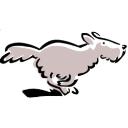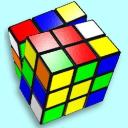Yahoo Clever wird am 4. Mai 2021 (Eastern Time, Zeitzone US-Ostküste) eingestellt. Ab dem 20. April 2021 (Eastern Time) ist die Website von Yahoo Clever nur noch im reinen Lesemodus verfügbar. Andere Yahoo Produkte oder Dienste oder Ihr Yahoo Account sind von diesen Änderungen nicht betroffen. Auf dieser Hilfeseite finden Sie weitere Informationen zur Einstellung von Yahoo Clever und dazu, wie Sie Ihre Daten herunterladen.
Help with sudoku?
So I’m trying to work on this particularly hard sudoku and I’m stumped. I have actually gone so far as writing down every single possibility for every single cell and there are only two cells that have two possibilities so I’m stumped. I don’t want answers because I can get those easily. I’m just wondering which cells in particular should I actually focus on and can actually solve. Because I’d like to actually solve this one instead of being given the answers but I know I’m missing something obvious.

6 Antworten
- WhoLv 7vor 2 Monaten
suggestion 1) to think about
each row and column has the numbers 1,2,3,4,5,6,7,8,9 in it
and each number can ONLY be there once
That means that an empty square CANNOT have a number in it that is already in the row or column the empty square is in
NOW have look at (row 5 column 1) and consider the numbers MISSING from that column but are already present in that row and eliminate these from those that could occupy R5C1
(you can do the same and consider those missing in a row - but then look at those present in the same column)
Now do the same for other squares
- L. E. GantLv 7vor 2 Monaten
col1 missing 5,6,8... but row 5 has 6 and 8, so (5,1) = 5 (row/col)
and (5,2) must be 1 or 2, and (5,5) must be 1 or 2
and (3,1) and (8,1) are one of 6 and 8row 2 missing 4,5,6,7 so (2,2) must be 5 or 7 and (2,3) = 5 or 7hence (2,7) and (2,8) must be 4 or 6 so (2,8) = 4 and (2,7) = 6
(1,9) and (3,7) must contain 1 or 8
but (1,2) must be 4....
- ignoramusLv 7vor 2 Monaten
Well, now, it depends somewhat on your technique. But first, what is the significance of the shaded squares? And why are some numbers in a bold black, and others in a lighter blue?
I suspect that the black numbers are the ones you were given to begin with. So are the lighter numbers the ones deduced by you? And can we rely on them being correct ? I guess I shall have to assume that they are OK. So where to go from there ?
You should try to keep a general overview of the whole grid, and on the distribution of each individual digit.
Go through it digit by digit. How many cells do you have with only two possibilities ? Those can be crucial. Are any of those cells in the SAME row or column ? Which cells have you determined, and what are the numbers in them ?
A quick scan shows me that there are several possibilities : I make 8 such pairs of cells, all in the top three rows. You have to be careful to eliminate ANY digits from a cell which can NOT go there.
Call the rows A, B, C, from the top down. Call the columns 1, 2 . . . 8, 9.
So, in row A, I note cell A4 and A5 as both having only two possibilities (2 and 6)
Row B : B2 and B3 have only (5 and 7), B7 and B8 have (4, 6).
Row C : B4 and B5 each have (4, 5)
H3 and I 3 both contain only (3, 9), and significantly, H8 and I 8 both contain (9).
This means that a 9 can only go in ONE cell in row G, and if you look upwards, that is sufficient to tell you which cell the 9 digit MUST go in.
Then go over the top rows, A, B, C. With all the similar pairs which I have indicated above, you should easily see what digit MUST go in A2, and then what belongs in C1.
Also examine closely H8.
That is enough to get you going. Keep refining the technique I have outlined, and you should be able to progress from there.
- billrussell42Lv 7vor 2 Monaten
That is a tough one. here is a start...
I'd start with E2 and E5, pick one for 1 and the other for 2 and continue. If that leads to an error, swap.
F3 and F7 are similar, either 1 or 2

- Wie finden Sie die Antworten? Melden Sie sich an, um über die Antwort abzustimmen.
- PuzzlingLv 7vor 2 Monaten
Here's something that will get you going:
The only candidate for cell (R2, C8) is 4. All other digits appear at least once in the related area (i.e., in the same row (R2), in the same column (C8) or in the same square (S3)).
You have a similar situation again for cell (R2, C7) only having one value.
I won't say anything more unless you update that you need further help.
- SamwiseLv 7vor 2 Monaten
I will try to be as unspecific as possible, so as not to disrupt the pleasure of solving it yourself. Check the 9s, and pay attention to rows.






